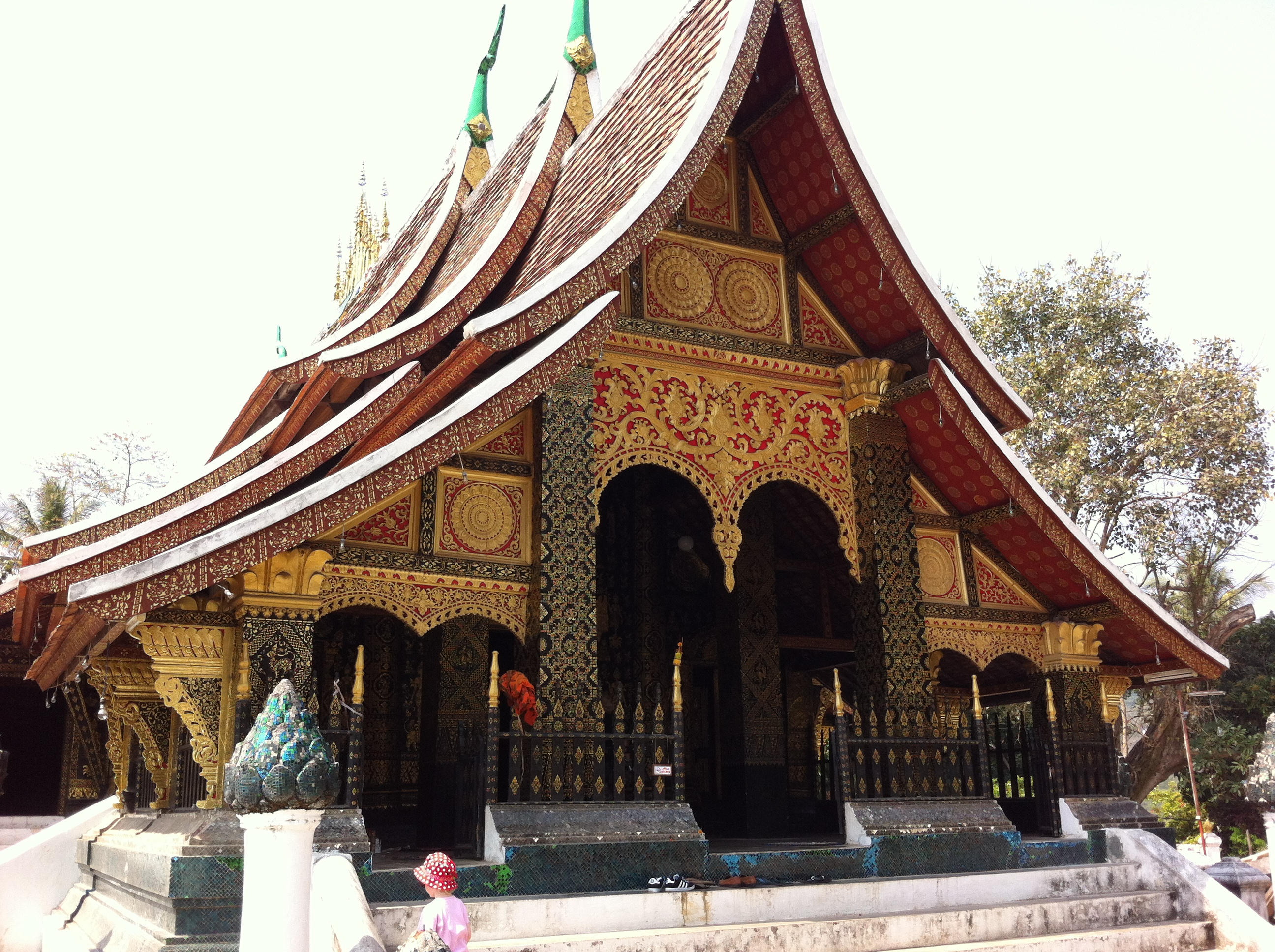
By Catherine Clover –
“In so far as Luang Prabang is like any other place, it is perhaps a little like an Austrian mountain village, with palms instead of pines”.
Andrew Graham, Interval in IndoChina, London, 1956 [1].
Sitting atop the bank of the Mekong in Northern Laos is the peaceful, sleepy town of Luang Prabang. It truly embodies what the French term charmant. Known for its numerous wats or Buddhist temples, the town at one time in the 18th century was home to more than 65. That number has decreased over the centuries, but the town still contains over 30 wats, most of which are still in use today [2]. Luang Prabang has a long history as a town of royal significance.
“Luang Prabang was established as the royal capital by Fa Ngoum, the first monarch of Lane Xang, the Land of a Million Elephants, in the 14th century. The city had already been the seat of local kingdoms for about 600 years. According to legend, the site of the town was chosen by two resident hermits.” [3]
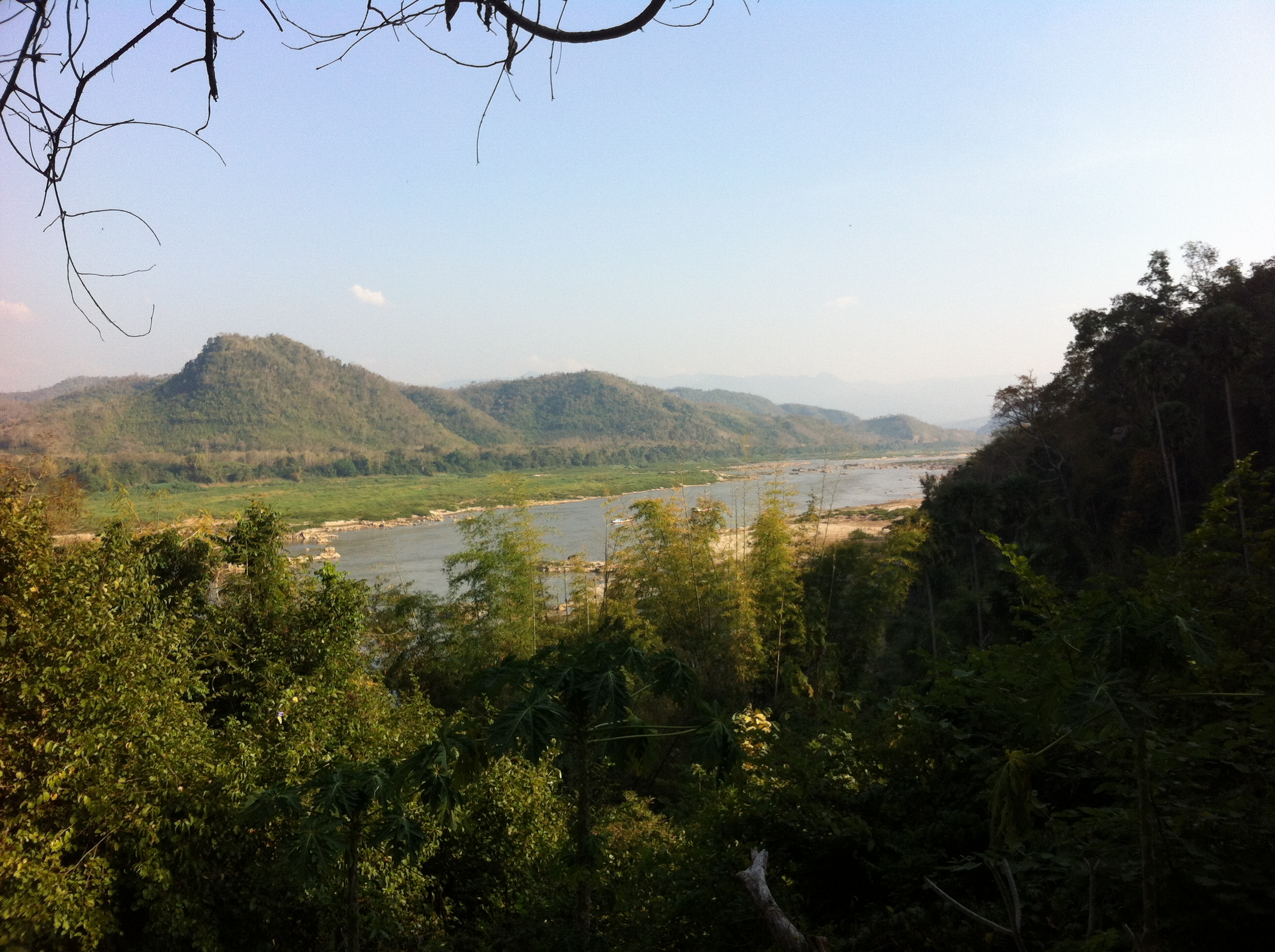
The town is famous for the numerous well-preserved wats and the Royal Palace, now open to visitors as the National Museum. The purpose of this article however is to provide the reader with insight into travel along the Mekong River from the picturesque town of Luang Prabang to the Pak Ou caves upriver. Of particular interest are the foreign explorers of the nineteenth and twentieth century who wrote their own description of the river and their observations on what they encountered. Although not the first European explorer to the area, Frenchman Henri Mouhot (1826-1861) provided the most famous account that inspired future Frenchmen to follow his trail along the Mekong. Mouhot perished from malaria in Luang Prabang and his tomb and monument remain in the town [4]. Most notably among the later explorers were the members and crew of the famous Mekong Exploration Commission (1866-68). The Commission’s account as written and compiled by Francis Garnier (1839-1873) described in great detail what the six Frenchmen and their staff encountered on their two-year expedition. The Commanding officer was E. M. L Doudart de Lagrée. His written account of the Commission’s journey and findings was destroyed by his own wish from on his deathbed. The destruction of Lagrée’s personal papers is not without controversy; it would have served history well to know what his own impressions were. They would likely have been at odds with those of Garnier’s. Indeed, it was Garnier who decided to burn Lagrée’s writings after Lagrée’s death in order to see that Lagrée’s wishes were upheld when another member of the Commission, Dr. Louis Joubert, wanted to preserve them. [5]
An additional asset to the surviving account and subsequent published report on the expedition are the sketches by the draughtsman assigned to the Commission, Louis Delaporte. An accomplished artist who travelled with the Commission to provide visual documentation, he would later devote himself to the archaeology and preservation of the ruins of Angkor. His sketches and engravings provide an important visual record of the ruins at Angkor, particularly in light of the damage caused by the Khmer Rouge one hundred years later. It is from both the written description in Garnier’s Report of the Mekong Commission and Delaporte’s sketches that we have an invaluable account of the Caves at Pak Ou in 1867. Interestingly, it was Delaporte who designed Henri Mouhot’s tomb in Luang Prabang, six years after Mouhot’s death. According to Garnier, the monument was to stand as a “lasting reminder, both sad and touching, to the passage of foreigners in his country:” [6] Mouhot’s discovery of Angkor Wat in 1860 [7] had undoubtedly made an impression on the young Delaporte who would have certainly been honored to design the monument to the fallen Frenchman.
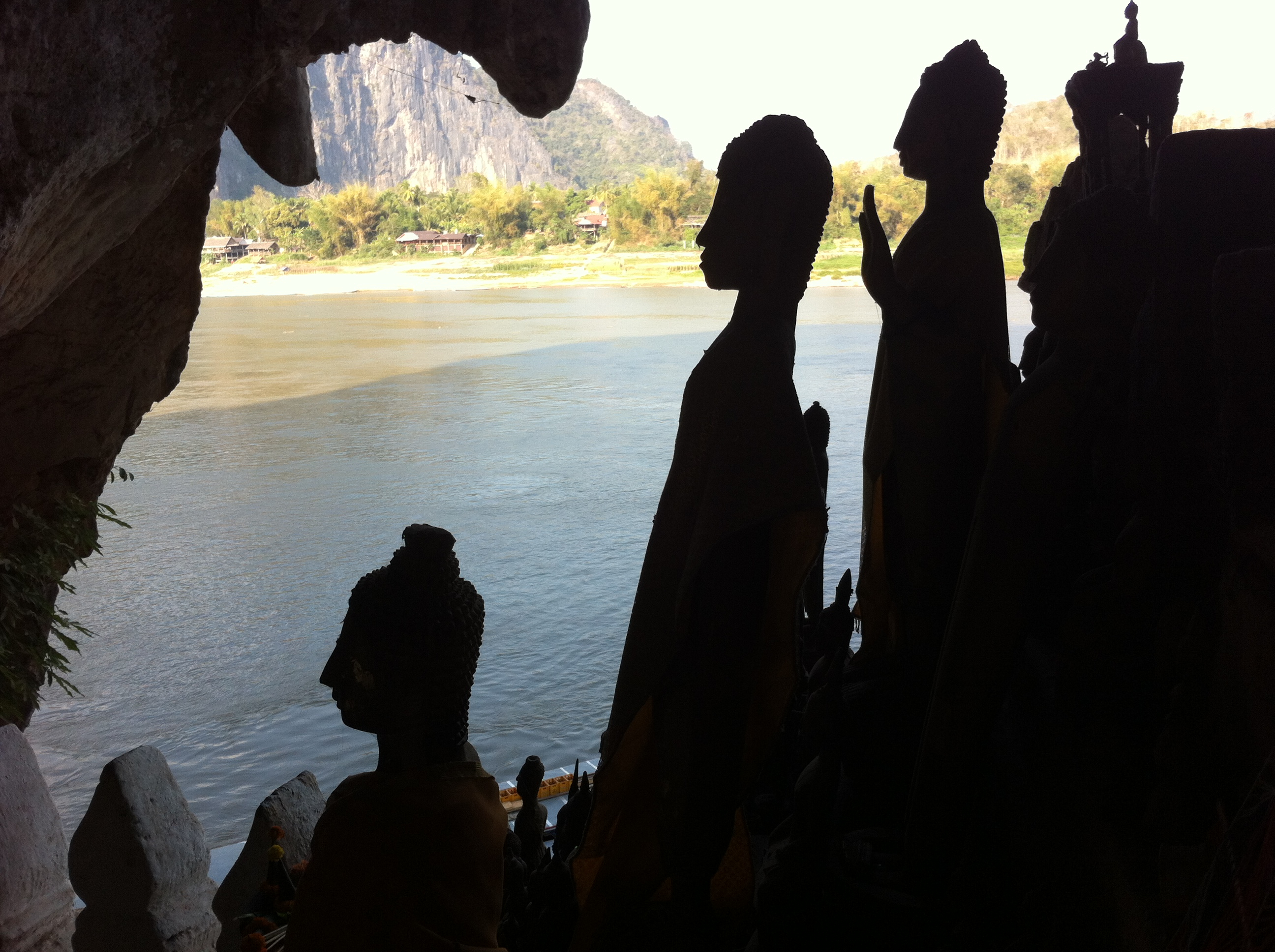
It is worth noting that the Mekong River, as it flows from China through Burma and Laos, Thailand, Vietnam and Cambodia, is a natural wonder. Parts of it provide the setting for such serene beauty that it is hard to imagine any wars being waged along its boundaries. At least one third of it acts as an international boundary between Laos and Thailand. And yet the fate of this remarkable river that provides a livelihood for the many people who rely on its bounty is in peril with every year that passes. Like the Yangtze in China, there is a strong desire to dam the river in various places, which would effectively bring about the demise of the mighty Mekong.
Along the 25-kilometer stretch of the Mekong where it leads north from Luang Prabang to the fork of the Nam Ou River, the scene is one that would make modern day travelers feel they were embarking on a personal odyssey of discovery. It remains today a most memorable experience given the sheer lack of any signs of modern civilization. There are no telephone wires, no bridges spanning the water. The only sound one hears is the soft rumble of the boat’s engine as passage is made up the river. The two-hour boat ride gives one time to contemplate the utter remoteness of the region. Bumping along in the river one can only imagine what the members of the Mekong Commission would think of the relative comfort and speed afforded by a powerboat.
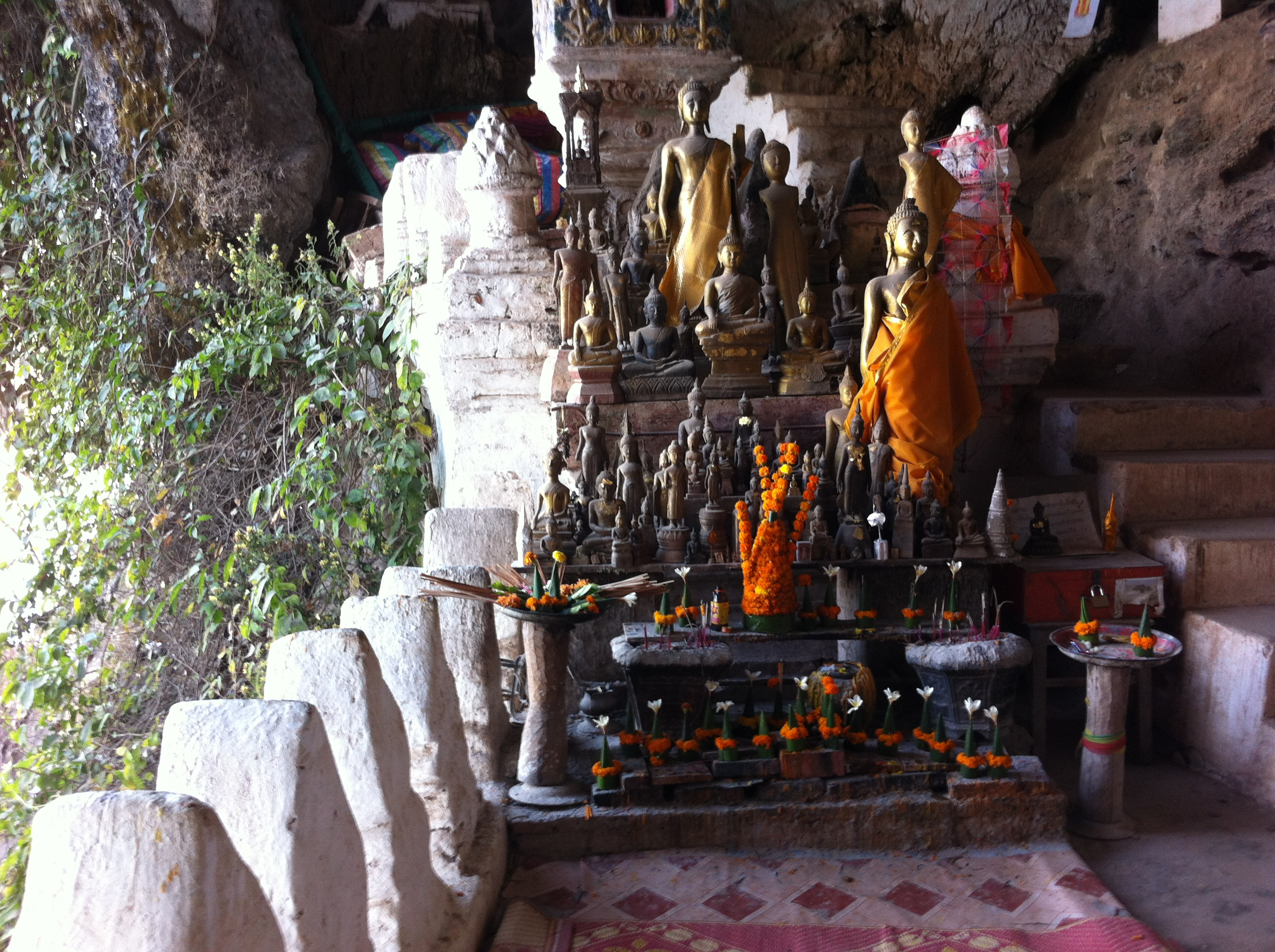
Many riparian activities are encountered in the course of the cruise. Herds of water buffalo lazily doze in the shade along the riverbanks. Naked children chase each other, splashing and playing in the river’s murky brown waters. One sees the occasional vibrant saphron and mustard robes of boy monks as they journey along the river’s edge to and from villages tucked back out of view from the water. After the long journey on the water, the cliffs housing the Pak Ou caves come into view and the connection with the past comes alive.
The Pak Ou Caves are set into the sheer limestone cliff at the confluence of the Mekong and Nam Ou rivers. They are a pilgrimage site for Buddhists and today contain thousands of carved wooden and gilded resin Buddha statues of all shapes and sizes in two caves. The first cave, Tham Ting, is located about 60 meters [8] above the river. The Tam Theung cave is higher and as a cave is deeper, 54 meters, [9] with an ancient carved wooden frieze over the entrance. Centuries of royal patronage by the royal family in Luang Prabang played a key role in the large number of statues seen in both caves. Every year the royal family from Luang Prabang would commission artists to create statues for the caves. This tradition continued until 1975. [10]
“The two sacred caves, supposedly discovered by King Setthathirat in the 16th century, are studded with thousands of wood and gold Buddha statues; some are thought to be more than 300 years old.” [11]
The caves had been visited for centuries when Lagrée and Garnier came upon them in 1867. That they impressed the members of the Commission can be determined from the descriptive quality of Delaporte’s sketches of them. Knowing how dark the upper cave is (a torch is required to visit the inner section) gives Delaporte’s detailed drawing great importance. It would not have been easy to accurately depict the contents of the dark cave, even with rudimentary lamps and torches. Back down below, from the shelter of the rocky overhang the Commission would have had a dry place to survey the two rivers and the Nam Ou valley beyond.c[12] Today the caves are in good condition thanks to a team of Laos and Australian conservationists who cleaned and catalogued the caves from 1992-1997. The Tam Ting cave is still used every April for religious purposes as a place to cleanse the household image of Lord Buddha. [13]
When visiting the caves today, modern conveniences such as powerboats, manmade concrete stairways with concrete handrails and modern wooden ladders greet guests. Access to the caves can only be gained by climbing up steep steps that cling to the cliff side facing the Mekong. One can only imagine what it would have been like for members of the Commission and Lao pilgrims before such modern conveniences were available The views from both caves over the Nam Ou valley and Mekong River basin are remarkable for their stark simplicity. The sheer lack of population on the river and the quiet solitude that the sacred caves provide afford the visitor a glimpse of what nineteenth century European visitors would have encountered.
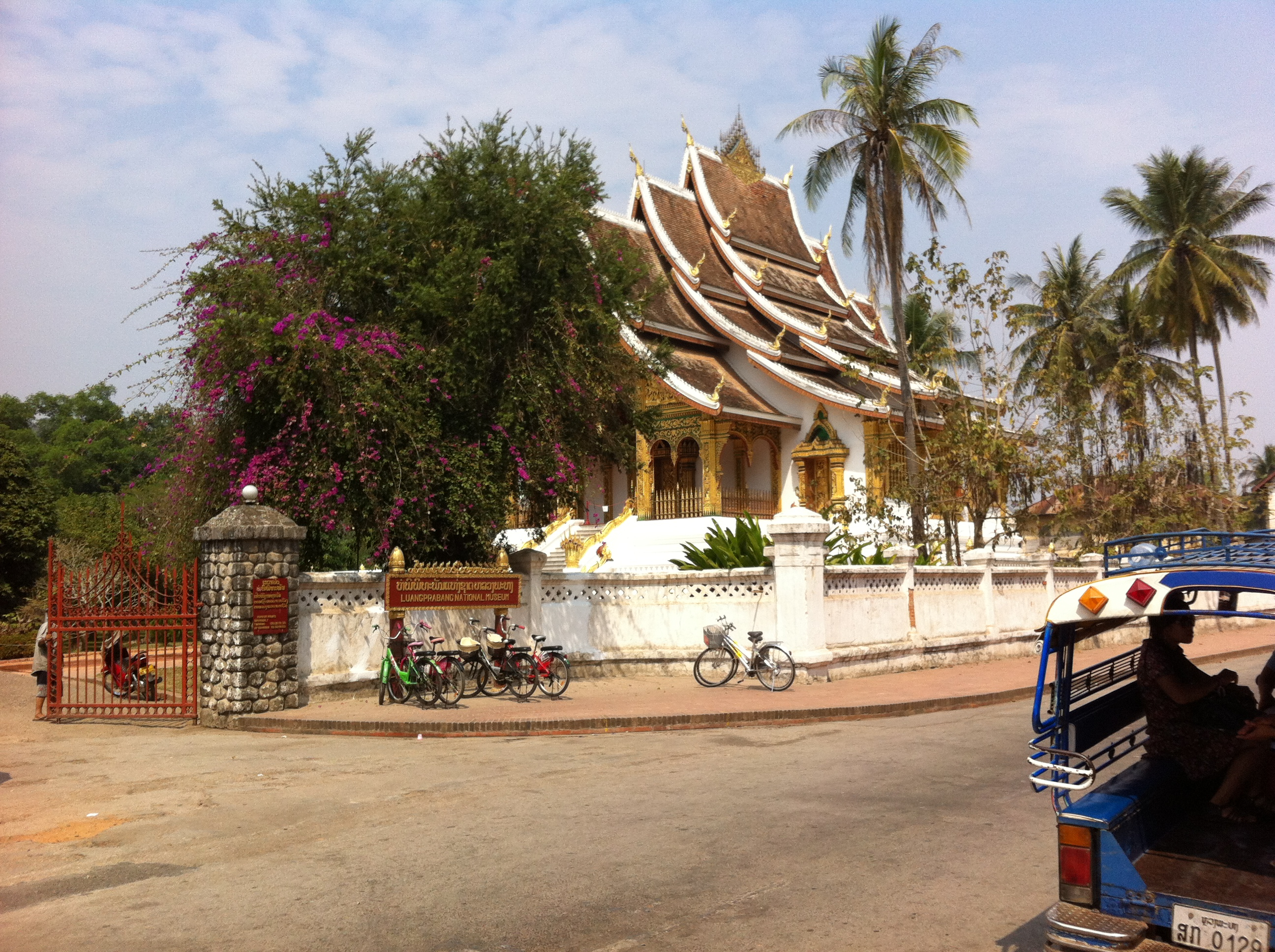
Back in the boat on the return down the river, the trip goes much faster. The boat now moves along in stride with the current. As the sun sets over the distant hills, the real Mekong evening show begins. Whole families bathe in the river, washing and wringing out their simple clothes, while the smoke trails from the village fires in the distance give a sense of the inhabitants who make this river their home. The villager’s huts are barely visible through the trees. Further down the river towards Luang Prabang the outlines of various chofas of the town’s historic temples peek through the tops of the trees. We are back where we have started; the river and cave exploration is complete.
Select Bibliography:
John F. Cady, John F., Thailand, Burma, Laos & Cambodia, New Jersey, 1966.
Gwyneth Chaturachinda et al., Dictionary of South & Southeast Asian Art, Bangkok, 2000.
Andrew Graham, Interval in IndoChina, London, 1956.
John Keay, Mad About the Mekong, Exploration and Empire in South-East Asia, London, 2006.
Victor T. King, Explorers of South-East Asia, Six Lives, Oxford, 1995.
Henri Mouhot, Travels in Siam, Cambodia, Laos and Annam, Bangkok, 2000.
Philip Rawson, The Art of Southeast Asia, London, 1990.
Unknown Author, The French in Indo-China, With a Narrative of Garnier’s explorations in Cochin-China, Annam and Tonquin, Edinburgh, 1884.
Notes
[1] Graham, Andrew, Interval in IndoChina, London, 1956, 154
[2] Eliot, Joshua, et al., Vietnam, Laos & Cambodia Handbook, Bath, 1995, 368
[3] Eliot, op. cit., 368
[4] Eliot, op. cit., 375
[5] Keay, John, Mad About the Mekong, Exploration and Empire in South-East Asia, London, 2006, 275-276
[6] Keay, op. cit., 169
[7] Eliot, op. cit., 375
[8] Pak Ou Caves marker, Lower Cave, Laos
[9] Pak Ou Caves marker, Upper Cave, Laos
[10] Pak Ou Caves marker, History, Laos
[11] Eliot, op. cit., 376
[12] Keay, op. cit., 179
[13] Pak Ou Caves marker, Conservation Work, Laos